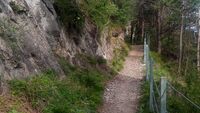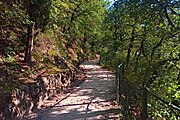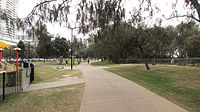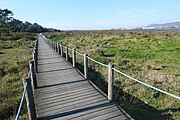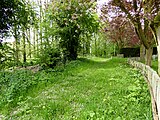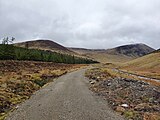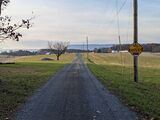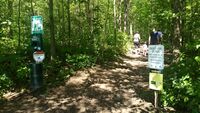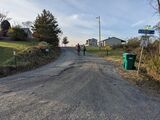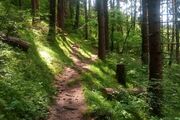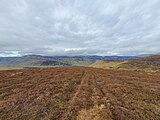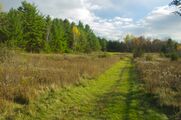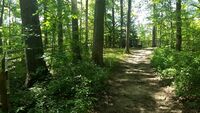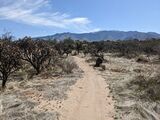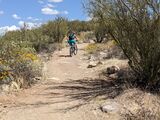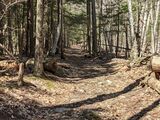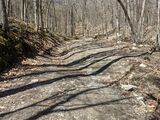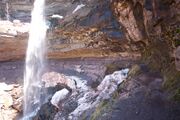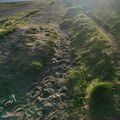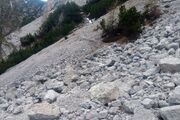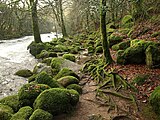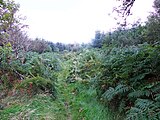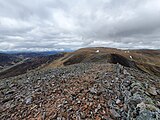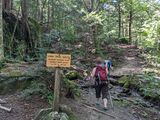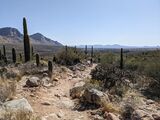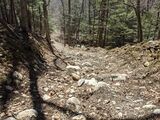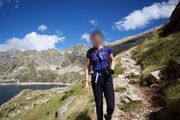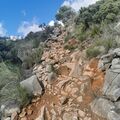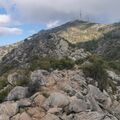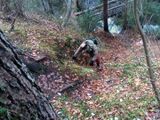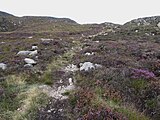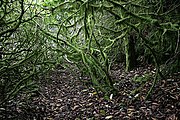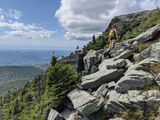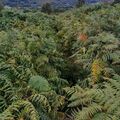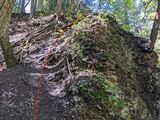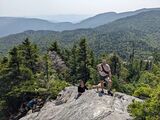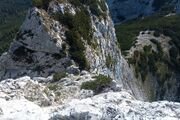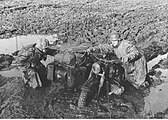User:Erutan/foot scale
Proposed Scale
This scale provides a universal means of describing paths from the perspective of someone on foot (not riding an animal or bicycle etc) focusing on accessibility concerns and real world impacts of the vast majority of casual and recreational users.
Value 1: Casual
foot_scale=casual
Editor description: Requires little to no attention to traverse, very accessible
The ground may not be entirely smooth and clear but it has few to no obstacles and is over flat or low angle terrain. If there are obstacles they are to be minor and/or have a large amount of space around them. These paths can often use imported materials for their surfaces (gravel or asphalt) but can also be on naturally occuring firm ground where traction is not an issue. The path must be wide enough for people to walk side by side and for people in opposing directions to go past each other without stepping off of the path. Steep drop offs must have a railing or some other means of protection.
Expectations:
- Accessibility: In general anyone that can walk (even with some mobility issues) like those that need to use a walking aid, the very young and elderly, etc can safely traverse this terrain.
- Focus: Little to no focus is needed, people can walk and talk and not pay much attention to the path surface.
- Footwear: Almost all casual footwear will be adequate.
Roughly equivalent to local scales: Class 1 YDS, ~NFS Class 4-5 Trails, SAC T1 / Yellow, Austria Blue, CAI T, AWTGS Grades 1, PWS W1 & W2
Note: Casual walking paths that are wheelchair accessible should be tagged with wheelchair=yes.
Example Images:
Value 2: Attentive
foot_scale=attentive
Editor description: Requires attention to traverse, but still relatively straightforward
These paths are generally are either narrow enough that people need to walk single file (and step off to pass), have steep unprotected drops offs along the side, or have modest yet impactful obstacles. Obstacles are generally ankle to knee high like roots or rocks - though these can almost always be avoided and it is possible to walk on an even or nearly even surface. The surface itself still provides decent traction regardless of obstacles, but you may need to pay attention in places especially if you are on a moderately angled slope.
Expectations:
- Accessibility: People that need to use aids when walking, or have relatively minor issues that impact their mobility can have problems and need to move carefully, but should be able to safely traverse it.
- Focus: People need to be attentive of obstacles or footing to avoid tripping or slipping, but can still split their attention to carry on a conversation.
- Footwear: Sneakers or other casual footwear should be fine.
Roughly equivalent to local scales: Class 1 YDS, ~NFS Class 2-3 Trails, SAC T1 / Yellow, Austria Blue, CAI E, AWTGS Grades 2, PWS W1 & W2
Example Images:
Value 3: Surefooted
foot_scale=surefooted
Editor description: More complex terrain that requires surefootedness to traverse
Where attentive path surfaces have obstacles that can largely be avoided, this terrain requires people to be able to move with balance and coordination (be surefooted) to maintain traction. It’s common to have to lift your legs high to step up onto an obstacle, or move from uneven obstacle to uneven obstacle like rocks or roots. It can also include moving through mud, wet clay, slick or loose surfaces, etc where the surface itself is essentially an obstacle due to poor traction. A path is also surefooted if it is obscured enough you can’t see where you are stepping, as you may need to react quickly if stepping onto an uneven or loose surface.
Expectations:
- Accessibility: If someone has mobility or balance issues they may be unable to proceed safely or comfortably on this terrain. This can be very challenging to inexperienced hikers, but will be straightforward for mountaineers.
- Focus: Attention will need to paid to footing for long stretches in places to avoid loss of traction or falling.
- Footwear: This is more consequential. Lightweight but outdoorsy shoes like trail runners or approach shoes would be helpful, but sneakers should still work though more care might need to be taken. People with bad ankles or that lack experience may want traditional mid or high top boots.
Roughly equivalent to local scales: Class 1 YDS, NFS Class 1-3 Trails, SAC T2 / White-Red-White, Austria Red, CAI EE, AWTGS Grade 3?, PWS T1-T2
Example Images:
Value 4: Hands for Assistance
Editor description: Rougher terrain that requires hands for balance, or to interact with obstacles
foot_scale=hands_for_assistance
The path surface that is uneven or steep enough that it’d be reasonable to expect people to require use of their hands or trekking poles to safely traverse it. Obstacles like larger talus or boulders where you need to put a hand on a piece here or there to support yourself, aid with balance, or move around it. You might be occasionally be pushing off or pulling up on obstacles, but you aren’t actually using them to scramble or climb and you aren’t searching for mulitple handholds in a row. Having to actively push through bushes or branches to proceed as opposed to just brushing them out of the way occasionally would also fall into this category.
Expectations:
- Accessibility: You need a stronger sense of balance and coordination than on
surefootedterrain. Being able to control your body’s momentum and be aware of your weight and how it is moving over obstacles is important. - Focus: Intense concentration is often necessary. The skill and experience to think a few steps ahead while focusing on the path is very helpful.
- Footwear: At this point something with grippy soles meant for hiking is highly recommended. These can still be very lightweight for experiened individuals.
Roughly equivalent to local scales: Class 2 YDS, NFS Class 1-2 Trails, SAC T3 / White-Red-White, UAII 1, Austria Black, SWW White-red-white, CAI EE, AWTGS 3-4?, PWS T3-T4?, BMC Grade 0.5?
Example Images:
Value 5: Simple Climbing
Editor description: More vertical terrain where hands are needed to climb/scramble, but is simpler than technical climbing=*
foot_scale=simple_climbing
Large obstacles or slopes that are steep enough they need to be “climbed” using all four limbs but are simpler than technical climbing=* in which use of safety equipment like a rope and harness are recommended. Hand and footholds should be useable without having to know advanced techniques, obvious, and sturdy. Your feet are off of level ground and you need to move from handhold to handhold for an extended period of time.
Expectations:
- Accessibility: You need to be use significant upper body strength to along with your legs to climb upwards. While not considered “technical climbing” significant risk can be involved. Previous climbing or mountaineering experience is highly recommended.
- Focus: Loss of focus can have lead to serious or fatal consequences.
- Footwear: Something a bit technical is recommended. You’ll generally want something more traditional with “structure” or a lightweight shoe that conforms to the foot for better feel and independent use of foot muscles for control.
Roughly equivalent to local scales: YDS Class 3, NFS Class 1 Trails, SAC T4, CAI EEA, AWTGS 4-5?, PWS T3-R?, BMC Grade 0.5-1.
Example Images:
Value 6: Equipment Recommended
Editor description: These paths are not safely or comfortably passable by non-specialists without use of non-standard equipment.
foot_scale=equipment_recommended
This does not refer to shoes, trekking poles, clothing, water bottles, sunscreen, and other common pieces of equipment that people would normally use, but that which someone normally wouldn't go out with "on a walk" like machetes, saws, ice axes, crampons, rope & harnesses, helmets, or pack rafts.
Examples:
- Travel on a glacier or areas that hold ice that require ice axe and crampons.
- More difficult "semi-technical" scrambling that overlaps into easier technical climbing (YDS 4 goes up to YDS ~5.5, SAC T5-T6 goes up to UIAA II, BMC 2-3 recommend ropes and helmets) where the average person should be roped in for safety. Skilled climbers and mountaineers will free climb, but they're not your average person "on foot".
- Abandoned or infrequently maintained paths that are so overgrown to be impassible or nearly impassible without use of an axe, machete, or saw.
- Terrain where mud or water is deep enough you cannot wade through it, and having a flotation device, winch, or swimming is necessary.
There is often little to no sign of being a proper "path", though it is a route that people have done before. Most countries don't print semi-technical scrambling routes on maps, though such terrain may show up on informal paths.
Expectations:
- Accessibility: You should have the proper equipment to safely traverse this path. Further research is necessary.
- Focus: Loss of focus can have serious or fatal consequences.
- Footwear: Something specifically designed for the rough terrain would be appropriate.
Roughly equivalent to local scales: Class 4 YDS, Bouldering VB, SAC T5-6, UAII 1-2, Austria “Alpine Route”, CAI EEA-EAI, AWTGS 6?, PWS T3-R?, BMC Grade 2-3.
